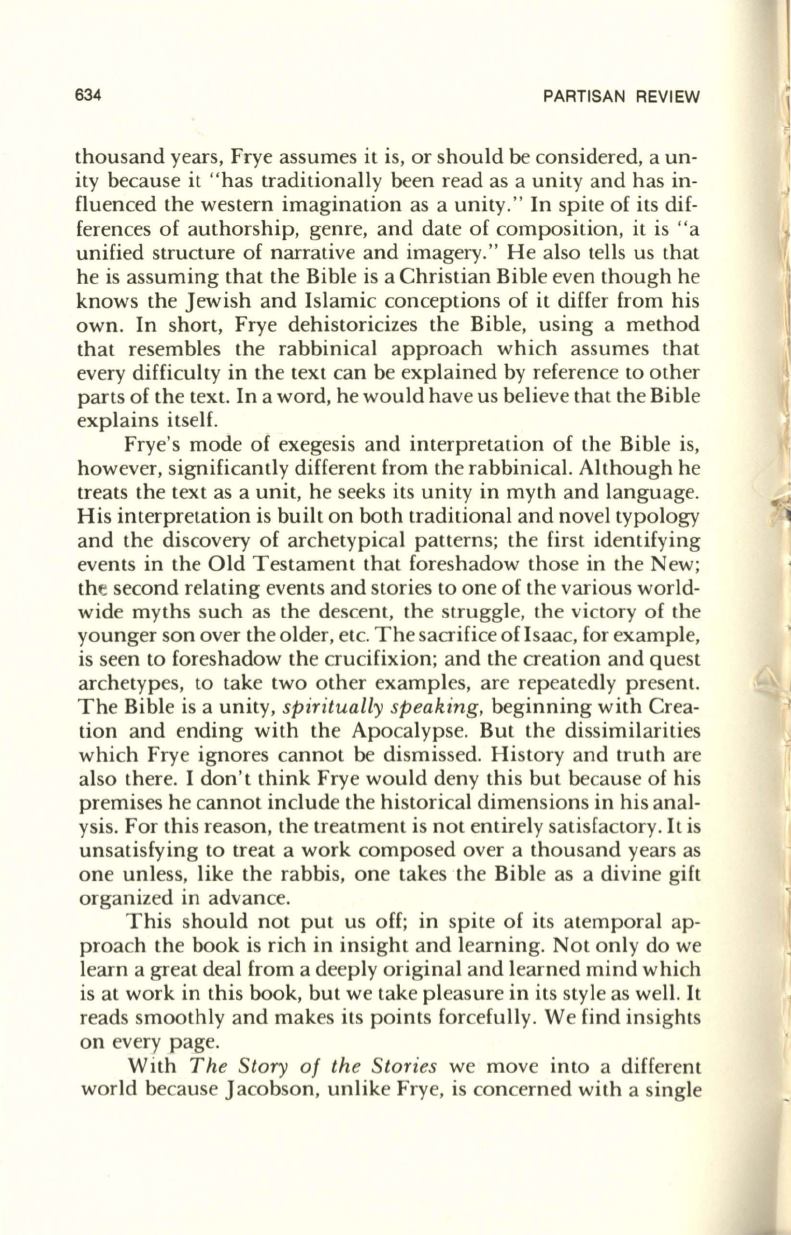
634
PARTISAN REVIEW
thousand years, Frye assumes it is, or should
be
considered, a un–
ity because it "has traditionally been read as a unity and has in–
fluenced the western imagination as a unity." In spite of its dif–
ferences of authorship, genre, and date of composition, it is " a
unified structure of narrative and imagery." He also tells us that
he is assuming that the Bible is a Christian Bible even though he
knows the Jewish and Islamic conceptions of it differ from his
own. In short, Frye dehistoricizes the Bible, using a method
that resembles the rabbinical approach which assumes that
every difficulty in the text can be explained by reference to other
parts of the text. In a word, he would have us believe that the Bible
explains itself.
Frye's mode of exegesis and interpretation of the Bible is,
however, significantly different from the rabbinical. Although he
treats the text as a unit, he seeks its unity in myth and language.
His interpretation is built on both traditional and novel typology
and the discovery of archetypical patterns; the first identifying
events in the Old Testament that foreshadow those in the New;
the second relating events and stories to one of the various world–
wide myths such as the descent, the struggle, the victory of the
younger son over the older, etc. The sacrifice of Isaac, for example,
is seen to foreshadow the crucifixion; and the creation and quest
archetypes, to take two other examples, are repeatedly present.
The Bible is a unity,
spiritually speaking,
beginning with Crea–
tion and ending with the Apocalypse. But the dissimilarities
which Frye ignores cannot
be
dismissed. History and truth are
also there. I don't think Frye would deny this but because of his
premises he cannot include the historical dimensions in his anal-
ysis. For this reason, the treatment is not entirely satisfactory. It is
unsatisfying to treat a work composed over a thousand years as
one unless, like the rabbis, one takes the Bible as a divine gift
organized in advance.
This should not put us off; in spite of its atemporal ap–
proach the book is rich in insight and learning. Not only do we
learn a great deal from a deeply original and learned mind which
is at work in this book, but we take pleasure in its style as well.
It
reads smoothly and makes its points forcefully. We find insights
on every paE"e.
With
The Story of the Stories
we move into a different
world because Jacobson, unlike Frye, is concerned with a single


